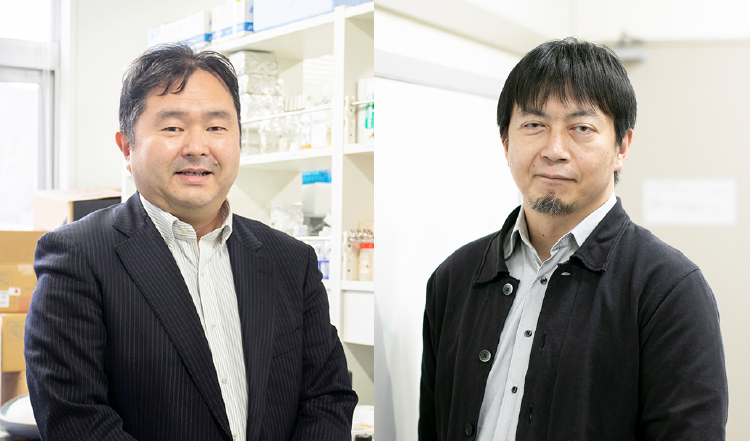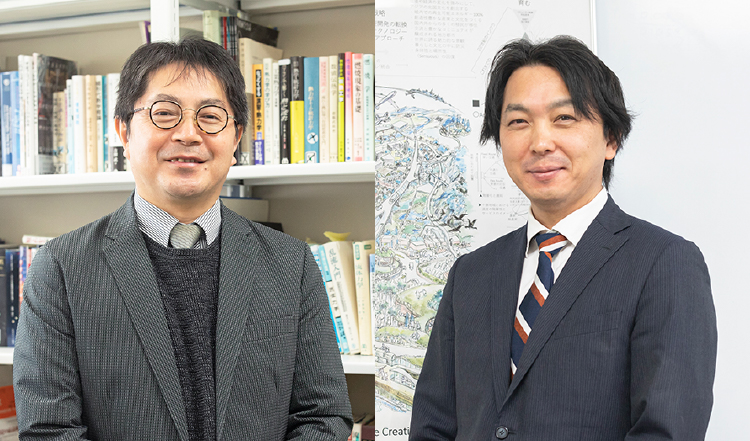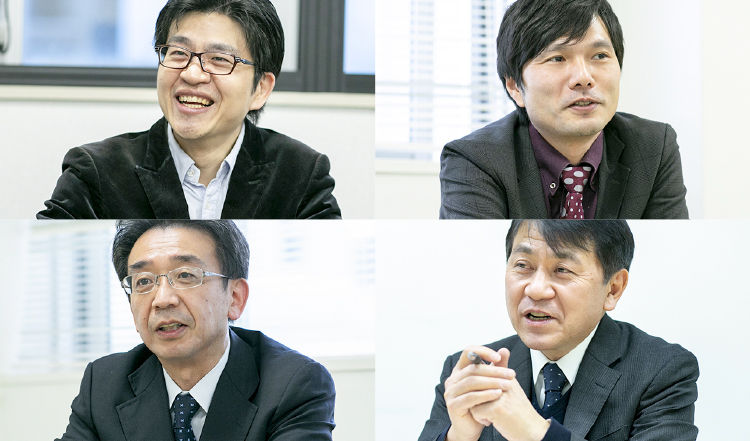Introduce Our Research
Materials and Recycling
× Muroran Institute of Technology
Muroran City, a manufacturing town with steel, shipbuilding, machinery, and other manufacturers, is one of the important manufacturing bases in Hokkaido. Muroran Institute of Technology is working with manufacturers to develop new materials and products that support Japan in the 21st century, as well as to develop technologies and systems that are related to energy conservation, which will show further demand in the future. We interviewed two professors who are involved in research on materials and recycling.
MEMBER
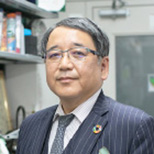
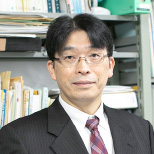
Professor Shimizu: I am conducting research on wear-resistant materials. Metallic wear is a phenomenon in which the surface is worn away when metal rubs against other metals. Metallic wear occurs every time a gear in a machine or a brake of an automobile starts or stops, and when it becomes impossible to take any more wear, the part reaches the end of its life. Although it wears, material with high wear resistance is called “wear-resistant material.” Extending the life of parts is extremely important for improving cost effectiveness, including reducing the human cost required for parts replacement, and the development of new materials with higher strength than conventional materials is always required. In my laboratory, we are developing new materials demanded by companies and evaluating whether the developed new materials meet safety standards and whether it is possible to extend the life of parts compared to conventional materials. We also provide advice on parts manufacturing in collaboration with companies.
In terms of research in the field of recycling, we also provide technology related to ship recycling. Many ships are built in Japan, but they are dismantled overseas due to problems such as labor costs. However, with the ratification of the Hong Kong International Convention for the Safe and Environmentally Sound Recycling of Ships, 2009 (Ship Recycling Convention), it is necessary to return to domestic dismantling in the future. Ninety-eight percent of ships are recyclable. Compared to iron-making from iron ore, the energy used in ship recycling is about one-third, leading to cost reduction. Very high-quality iron is used for ships. Ship recycling is also an opportunity to reduce manufacturing costs in domestic industries. We have established NPO Ship Recycle Muroran and are working to develop materials for the equipment necessary for dismantling, and to establish a safe and environmentally friendly advanced ship recycling system.
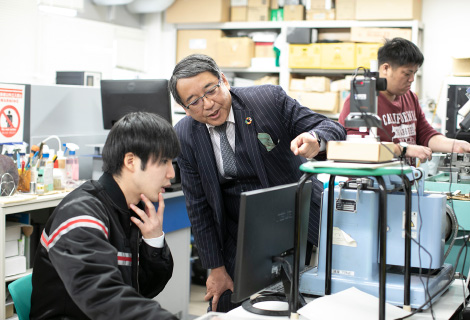
Professor Shimizu:Manufacturing products using recyclable materials and extending their lifespan to reduce the energy required for recycling will be a major challenge for the Japanese manufacturing industry in the future. The manufacturing field is now gradually changing with the CO2 emission reduction plan for 2030. Especially, the CO2 emissions in the iron and steel field accounts for about 40% of the domestic industrial field. It is a very large proportion. There is a tendency to switch from conventional iron-making using blast furnaces, which emit a large volume of CO2, to iron-making using hydrogen reduction and electric furnaces. However, since electric furnaces use a large amount of electricity, it is also necessary to secure electricity at the same time. For this reason, cooperation with not only the mechanical field but also the material field, electrical field, and information engineering field will become indispensable. I hope that Muroran Institute of Technology as a whole, including my laboratory, will tackle these issues.
Professor Momono:I am researching substances and materials that generate the superconductive phenomenon in which the electrical resistance becomes zero below a specific temperature. Superconductive wire is now used as an electric wire for super-powerful electromagnets used in medical MRI and linear motors. Superconductive materials are said to be the ultimate energy-saving materials with no energy loss due to their zero electrical resistance. For example, replacing the transmission line from a power plant with a superconductive wire can save about 5% of energy.
However, expensive liquid helium is used to cool superconductive materials, so there is a problem that the cost of using superconductivity is very high. For this reason, research is underway on high-temperature superconductive materials, which have an overwhelmingly higher superconductive transition temperature than ever before and cause superconductive phenomena using liquid nitrogen, which is much cheaper than liquid helium. I mainly research high-temperature cuprate superconductors, and high-quality single crystals are indispensable for that research. At our research facility, we produce high-quality single crystals using an infrared image furnace, a device that can collect light to synthesize substances at a temperature of 2000 °C or higher. The single crystals we make contribute to international joint research by being provided as experimental samples to large overseas research groups. Recently, we have provided a cuprate single crystal we produced for international joint research by a group studying superconductivity under strong magnetic fields in Europe and the United States. In that research, there was a new discovery about cuprate superconductors and a paper summarizing the results was published in the international academic journal Nature Physics in 2020.
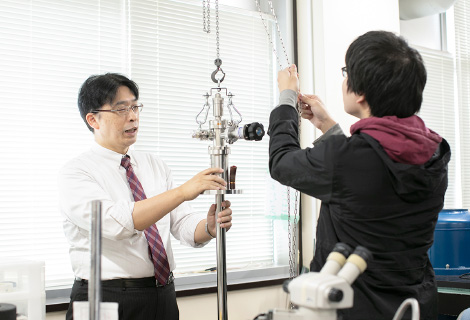
Professor Momono:I consider contributing to the elucidation of the expression mechanism of high-temperature superconductors. Currently, the elucidation of the mechanism of high-temperature cuprate superconductivity has almost been achieved, but it has not yet been completely elucidated. Liquid nitrogen is cheaper than liquid helium, but the ultimate goal is to achieve room-temperature superconductivity, which causes superconductivity at room temperature without doing anything. In 2020, a substance that causes superconductivity at room temperature was found, but there are still many issues. For example, it only occurs under ultra-high pressure. I would like to contribute to the realization of room-temperature superconductivity under 1 atm through research on materials.





